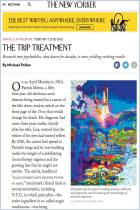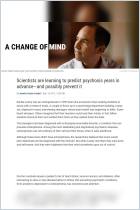Rejoignez getAbstract pour lire le résumé !

Rejoignez getAbstract pour lire le résumé !
Meredith Wadman
Zapping Cocaine Addiction
Powerful magnetic pulses that modify brain activity may loosen the drug’s grip.
Science, 2017
Aperçu
Noninvasive, magnetic pulses delivered to the brain may one day unlock the grasp of cocaine addiction.
Recommendation
With gut-wrenching tales about long-term cocaine addicts, Science magazine journalist Meredith Wadman explains how noninvasive, repetitive magnetic stimulation to the brain may change addiction treatment. Now clinical trials will determine the safety and efficacy of repetitive transcranial magnetic stimulation (rTMS) in people who have been unable to kick their cocaine habit. getAbstract recommends this article to anyone who is a cocaine addict, knows someone who is, or wants to understand how rTMS treats cocaine addiction.
Summary
About the Author
Science writer Meredith Wadman specializes in neuroscience. She received her medical degree from the University of Oxford, United Kingdom, and her master’s degree from Columbia Journalism School.





















Comment on this summary